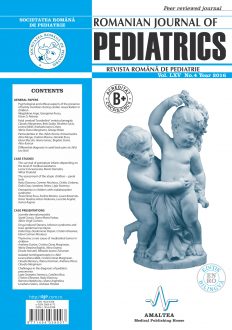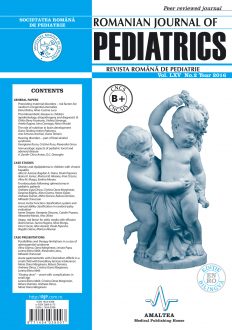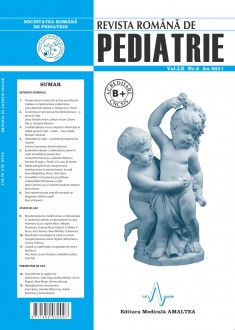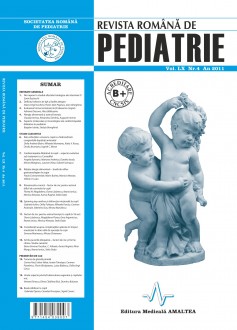SELECT ISSUE

Indexed

| |

|
|
|
| |
|
|
|

|
|
|
|
|
|
|
HIGHLIGHTS
National Awards “Science and Research”
NEW! RJP has announced the annually National Award for "Science and Research" for the best scientific articles published throughout the year in the official journal.
Read the Recommendations for the Conduct, Reporting, Editing, and Publication of Scholarly work in Medical Journals.
The published medical research literature is a global public good. Medical journal editors have a social responsibility to promote global health by publishing, whenever possible, research that furthers health worldwide.
PARTICULARITATI IN RINOSINUZITA CRONICA LA COPIL
Alina Murgu, Evelina Moraru, Daniela Rusu, Elena Macsim, Ileana Ioniuc, Bogdan Stana and Alice Azoicăi
REZUMAT
Rinosinuzita cronică (RSC), este o patologie rară în pediatrie comparativ cu adultul. Manifestările clinice sunt în relaţie, pe de o parte, cu particularităţile anatomice, iar pe de altă parte, cu cele de răspuns imun corelate cu vârsta copilului. Alergia constituie cauza principală în 50% dintre rinitele copilului, 40% dintre acestea debutând precoce până la vârsta de 6 ani. Expresia clinică a rinosinuzitei alergice la copil poate fi uneori însoţită de manifestări ale comorbidităţilor alergice asociate sau de complicaţii de vecinătate. Alterarea clearance-ului mucociliar poate fi însă indus şi de alte situaţii patologice mai rare care produc modificarea proprietăţilor reologice ale mucusului, ca în mucoviscidoză (FC). Prin heterogenitatea de expresie clinică în relaţie pe de o parte cu particularităţile de răspuns imunogenetic şi anatomice raportate la vârsta copilului şi pe de altă parte cu diversitatea factorilor etiologici inductori (de la foarte frecvenţi, precum alergia, la foarte puţin frecvenţi, FC), RSC impune un diagnostic corect, precoce şi un tratament adecvat prin colaborarea în echipă multidisciplinară.
Cuvinte cheie: rinosinuzită, copil, fibroza chistică, alergie
Full text | PDF



